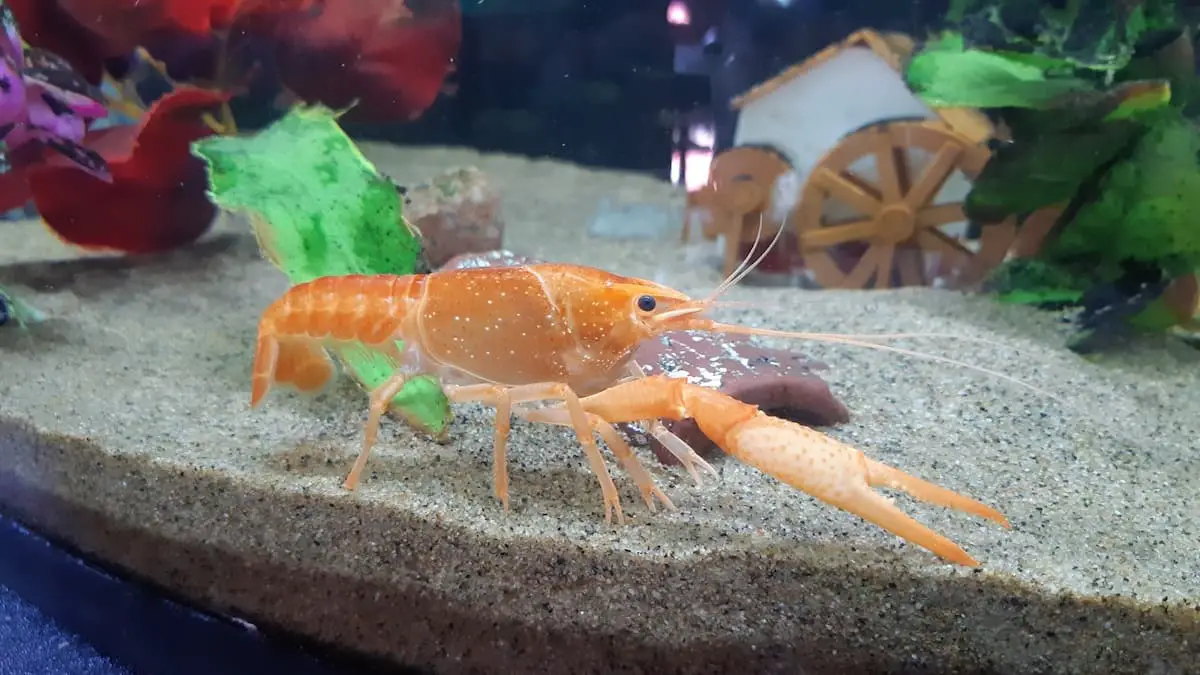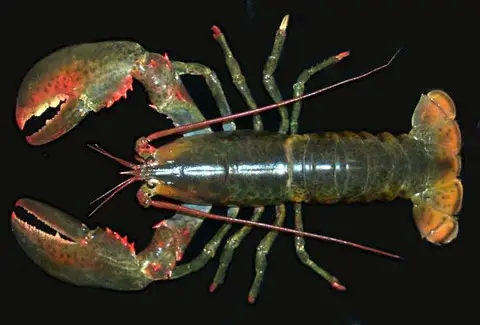Can Lobsters Live In Freshwater? (Explained)
Lobsters are invertebrates found in practically every ocean. Have you wondered if they can also live in freshwater environments, such as lakes or rivers? In this blog post, we’ll talk all about that but let’s begin with a quick answer:
Lobsters are saltwater animals and cannot live in freshwater due to their state of isotonic stability with the surrounding saltwater. This means that the same amount of water moves between the body tissues and salt water, and they cannot prevent the accumulation of fluids in their cells in low salinity environments.
However, this certainly doesn’t tell the whole story. Below I’ll explain more about why lobsters can’t live in freshwater and what happens if we put a lobster in freshwater. Furthermore, I’ll explain the confusion between freshwater crayfish and lobsters. At the end of this post, I’ll also answer a question about whether lobsters can live in brackish water or not and what is the perfect habitat for them.
Can lobsters live in freshwater?
Lobsters are exclusively marine animals and can’t live in freshwater because of the changes in salinity. These animals adapted to living in a state of isotonic stability with the surrounding saltwater, which means that the same amount of water moves between body tissues and the salt water.
Lobster bodies’ tissues, the cells, have a permeable membrane that allows water to flow in and out of the cell body, helping to soothe the cell’s vital needs. Based on chemical principles, the water will always flow to an area with a higher concentration of salts and minerals through a permeable membrane.
If you throw a lobster into freshwater, the state between the lobster’s body and the surrounding water is unstable. The cells of a lobster contain higher ions of salt and other minerals. Water invades cells, causing them to swell and eventually break. This kills cells as minerals try to diffuse into the water and dilute.
Lobsters are invertebrates and quite simple organisms, lacking a backbone and can’t push water out of cells actively. Vertebrates such as fish can do this because they have specialized organs like kidneys that help keep the body stable. This takes a lot of energy and a more complex organization of the body organs.
However, even with specialized organs that help keep their body stable, marine animals usually cannot tolerate freshwater for long periods. There are, of course, exceptions because some animals adapted to different environments. Some animals can change their kidney chemistry to function in both salt and fresh water due to their life cycles or migration patterns.
An example of an animal living in oceans and freshwater rivers is the bull shark. Other examples of animals adapted for both fresh and salt waters are salmon, Atlantic stingray, eels, and Gulf sturgeon.
What happens if you put a lobster in freshwater?
As I mentioned before, the balance of lobsters’ bodies’ salinity is necessary for them to survive. When you put a lobster in freshwater, the state between the lobster’s body and the surrounding water will be unstable. This will cause the water to rush into the cells, swelling and eventually breaking them. As a result, the lobster will die.
But what happens to lobsters if the water salinity is low? The research examined the ability of American lobsters to detect changes in salinity by monitoring heart rate and general behavior. The increase in their heart rate first occurred when the salinity had decreased from 32 to 26.6 ppt.
They also became restless and moved out of their shelters, where the salinity dropped below 18 ppt. Interestingly, this study also proved that lobsters can detect changes in salinity because they attempt to avoid it when exposed to low salinity.
Another thing the study proved is that some salinity receptors in lobsters are located in or near the branchial chamber (where gills are located). Read my other blog post: “Can Lobsters Breathe Air?”.
Can lobsters live in brackish water?
The optimum salinity range for lobsters is about 29-35 ppt. Brackish water is water in a natural environment with more salinity than freshwater but not as much as seawater. Lobsters cannot live in brackish water as the experiment showed their behavioral changes with the water salinity already at 26.6 ppt.
As the experiment showed, the heart rate of lobsters increases dramatically, and they also become restless.
But what about crayfish?
Crayfish and lobsters are very often confused with each other, which is why many people think lobsters can live in freshwater. It’s an easy mistake to make because they look incredibly similar as they both have hard exoskeletons, live in water, and (some) have large pincers. So why are lobsters not crayfish and crayfish not lobsters?


The first significant difference that is very important in this article is that crayfish are freshwater animals and lobsters are saltwater. Lobsters live in all oceans on sandy and muddy bottoms, while crayfish live in lakes, rivers, streams, and ponds.
Other differences are, for example, that lobsters are usually much larger than crayfish. They can also live longer, and their diet is slightly different. Lobsters prefer fish, clams, snails, mollusks, and other small crustaceans, while crayfish feed on insects, worms, and plants.
Lobsters and crayfish both belong to the crustaceans group, but this group is very diverse, and they don’t belong to the same family. Lobsters belong to the family called Nephropidae, while crayfish are distributed in three families: Astacidae, Cambaridae, and Parastacidae.
In summary, it is wrong if someone says that lobsters are freshwater animals because crayfish live in the freshwater. Lobsters are not crayfish; they belong to different families and adapted to different environments.
Where do lobsters live?
After discussing why lobsters can’t live in freshwater, let’s now talk about their perfect habitat. Lobsters belong to the phylum Arthropod, and they’re exclusively marine animals. They live in the Pacific, Indian, Atlantic, and even in the cold waters of the Arctic Oceans.
There are two main groups of lobsters which are Clawed lobsters (30 species) and Spiny or Rock Lobsters (45 species). One of the largest concentrations of lobsters was found in the northwest Atlantic Ocean. However, we have discovered only 20% of the ocean so far, so who knows what’s hiding in the dark depths?
Lobsters’ habitats range from tropical coral reefs, rocky shores, mud, tidal pools, and sand to kelp forests. They also live in seagrass meadows and the deep sea. These colorful creatures inhabit the intertidal zone but also depths of about 480 meters with temperatures of about 15-18°C (59-64°F).
Sources
- Dufort CG, Jury SH, Newcomb JM, O’Grady DF 3rd, Watson WH 3rd. Detection of salinity by the lobster, Homarus americanus. Biol Bull. 2001 Dec;201(3):424-34. doi: 10.2307/1543620. PMID: 11751254.
You may also like:

Welcome to Bubbly Diver!
I’m glad to see you here. This blog is created for all marine creature lovers by a bubbly diver - me, Dori :)


